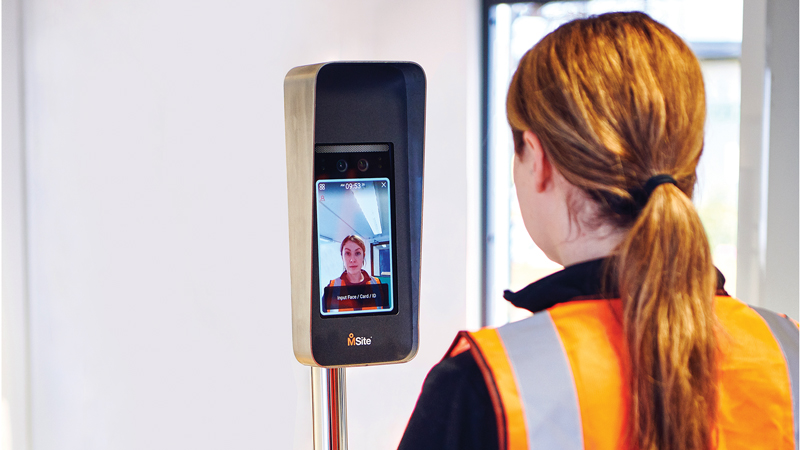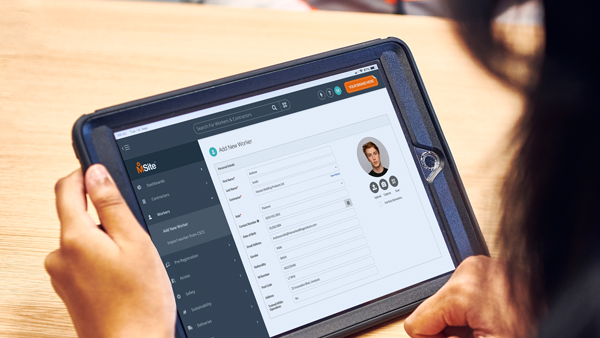Debunking the myths about biometric site access
The construction industry has been slow to adopt biometric systems. This is partly because the sector is generally cautious about investing in new technology due to numerous misconceptions about biometric site access and the workings of biometric authentication.
This situation has certainly been a 'sit up and smell the coffee' moment, leading more and more contractors to realize the benefits of a biometric solution. For those still on the fence, our experts aim to debunk some of the most common myths and misunderstandings.

What is biometric data?
Biometric data refers to unique physical characteristics of an individual that can be used for automated recognition. This type of data is commonly used in identity verification systems due to its uniqueness and consistency over time.
Biometric access control systems operate by recording a copy of this data and storing it in a secure database. When you attempt to use the system and gain access to a site, your fingerprint or face is scanned. If the system finds a match with the stored data, access is granted. However, if it cannot find a match within the database, access is denied. It's as simple as that.
5 misconceptions about biometric site access
Even though biometric authentication is becoming increasingly prevalent across all sectors and industries, there are still many fallacies in circulation. Some of the most common include:
1. Biometric data isn’t secure
A common misconception is that biometric data is stored as an actual image of a person's fingerprint or face. This would, of course, raise security concerns, as it would be relatively easy for someone to hack into the system and use the data. However, this is not true.
All biometric data is stored as a template in binary code, which means it's encrypted and stored as a series of 0s and 1s. This strong mathematical representation is almost impossible to re-engineer. Compared to an image or photograph, it is significantly harder for someone to hack.
What's more, biometric authentication can help improve security by reducing the risk of human error. Employees are not tasked with remembering a password or PIN code, and there’s no need to worry about them losing their key fob. It’s a safe and secure method of access control.
2. Biometric access systems are easily fooled
People often incorrectly assume that biometric access control systems can be tricked using an image of a fingerprint or a photograph. However, this assumption underestimates the technology.
The latest systems are advanced and sophisticated enough to discern the difference. Typically, they feature both 'active' and 'passive' detection capabilities, which allow them to successfully determine whether the presented biometric data is from a live human or a manufactured static representation.
If the biometric data is believed to be from a static representation, access will be denied.
3. Physical changes in appearance will prohibit biometric access
Our appearance is ever-changing, leading many to question whether a biometric device can recognise these changes and continue to grant access to authorised personnel.
The answer is yes. In fact, the iris of our eye never changes. And although our fingerprints and facial features may alter over time, this doesn’t pose an issue for modern biometric authentication systems. There’s no need to continuously update the system. It has built-in ‘self-learning’ capabilities, allowing it to automatically detect small changes and keep up with your evolving look.

4. Biometric access control systems are expensive
Construction contractors are not accustomed to making large software-based investments. Often, they apply the same cost-based approach to purchasing technology as they do to buying materials like plasterboard.
However, when it comes to an investment like this, it's important to consider the bigger picture. For starters, it's a misconception that all biometric equipment is expensive. As technology has advanced, the cost of biometrics has significantly decreased, making it much more affordable than many might think.
It’s also beneficial to adopt a value-based approach to the purchase. The upfront costs of a biometric device may exceed those of a standard key fob. But over time, it can lead to substantial savings.
5. Biometric Systems Violate Personal Privacy
Many people believe that biometric systems inherently infringe upon personal privacy. This concern stems from the idea that collecting and storing unique personal identifiers like fingerprints or facial scans could lead to unauthorised surveillance or tracking.
Reputable biometric systems are meticulously designed with user privacy as a top priority. They are typically governed by strict data protection laws, like the General Data Protection Regulation (GDPR) in Europe, which ensure the responsible handling of sensitive data.These systems often encrypt biometric data, converting it into secure mathematical representations that are not directly linked to the raw biometric images. This means that even if the data is accessed, it is not easily interpretable or exploitable.
Users are usually given control over their biometric data, including consent for its collection, clarity on how it is used, and the ability to have their data deleted from the system upon request.
Want to find out more about biometric site access?
In our opinion, it’s a no-brainer. Biometric site access is the way forward for all industries – particularly construction. But we understand why many contractors have reservations. And if you’re still unsure if it’s the right option for your company or would like to find out more about the biometric hardware and software available at MSite, please don’t hesitate to get in touch.
We’re always happy to help and will gladly talk you through the biometric authentication options available and answer any questions you may have. Either give us a call on 0333 456 2001 or, fill out our online contact form, and a member of the team will respond as soon as possible.

